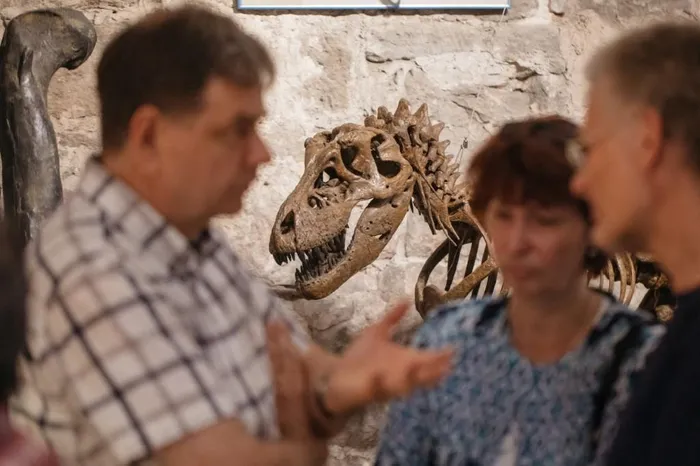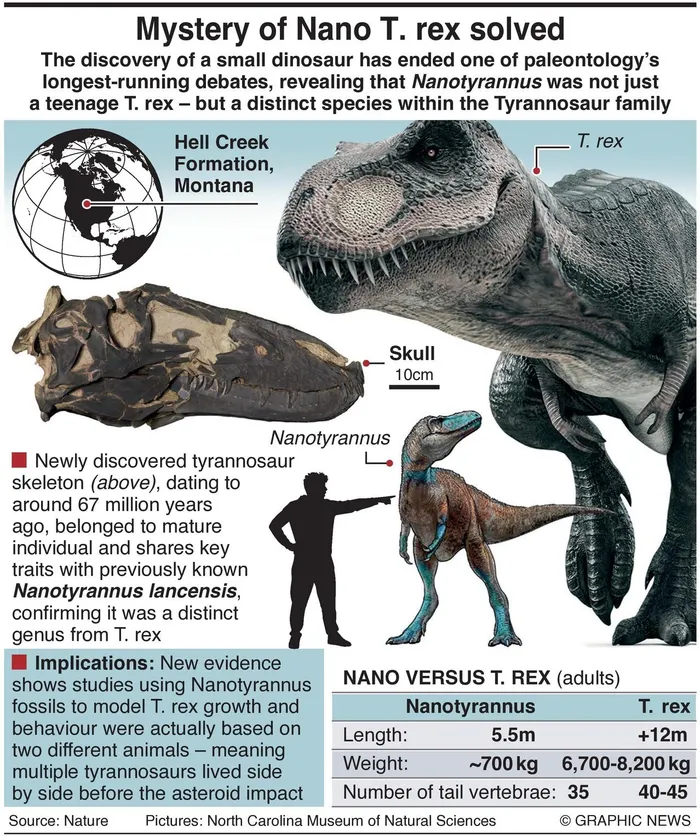'Tiny' T-Rex? New discovery settles decades-old debate about diminutive tyrannosaur

Thuringen, Schleusingen: Visitors look at the skeleton of a nanotyrannus in the exhibition "Living and petrified dinosaurs" in the Museum Schloss Bertholdsburg.
Image: Arifoto Ug / Michael Reichel / dpa-Zentralbild / dpa Picture-Alliance via AFP
The discovery of a small dinosaur has ended one of paleontology’s longest-running debates, revealing that Nanotyrannus was not just a teenage T. rex – but a distinct species within the Tyrannosaur family.

Graphic shows details of the discovery.
Image: Graphic News
The remarkably complete skeleton, unearthed in the Hell Creek Formation and dating to about 67 million years ago, has been described by Lindsay Zanno and James Napoli in a new study published in Nature.
Their analysis shows that the fossil belonged to a fully mature individual, displaying key traits consistent with the species Nanotyrannus lancensis.
The discovery confirms that Nanotyrannus represents a separate genus within the tyrannosaur family, rather than a developmental stage of T. rex as many scientists had long believed.
The implications are profound. For years, paleontologists used Nanotyrannus fossils to model the growth and behaviour of T. rex. The new evidence shows these studies were actually comparing two different animals – indicating that multiple species of tyrannosaur coexisted in North America just before the asteroid impact that ended the age of dinosaurs.
In the course of their research, Zanno and Napoli also identified subtle differences between known Nanotyrannus fossils.
One specimen, once thought to be a young T. rex, proved distinct enough to warrant classification as a new species of Nanotyrannus, which the researchers have named Nanotyrannus lethaeus.
With this discovery, a decades-long scientific controversy has finally reached its conclusion – and the Late Cretaceous world has become just a little more crowded with tyrannosaurs.
Graphic News
Related Topics: